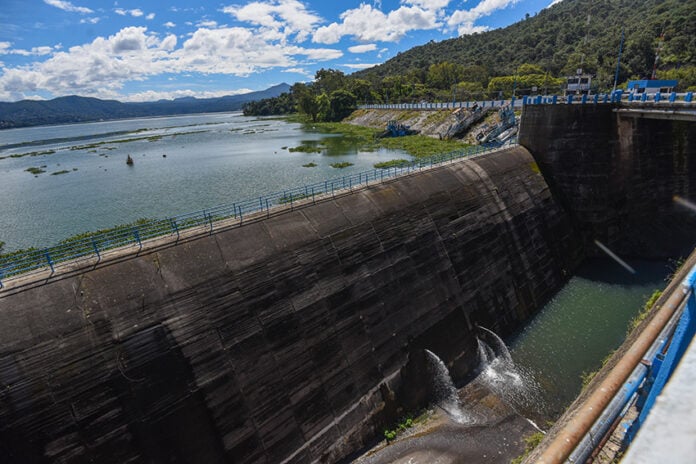Sixteen months after warnings that Mexico City was on the verge of a water crisis, the Cutzamala System of dams and reservoirs is above 97% capacity, its highest level in 10 years.
During this week’s National Water Commission (Conagua) Hydraulic Works committee meeting, officials confirmed that the critical water supply system nearly reached maximum water capacity as the year’s hydrological cycle came to a close.
Historic rains lead to record reservoir capacity

Although the rainy season is winding down, Mexico in general and central Mexico in particular saw historic rainfall this year. A record 220 million cubic meters of water fell on Mexico City in June, and an Aug. 10 downpour (the biggest on record since 1952) caused historic flooding in the capital, only to be topped a month later when 34 million cubic meters of water inundated Mexico City once again.
Citlalli Peraza, director of the Valley of Mexico Basin Water Agency, said that water levels are unlikely to rise even if additional rainfall occurs. “The system has reached a neutral point,” she said, adding that a gradual decline will occur until next year’s rainy season begins.
Water management specialists project that the Cutzamala’s current storage levels should ensure water supply stability through 2027. Even so, Conagua officials called on residents in the Valley of Mexico to use water responsibly to preserve the current advantage.
The Cutzamala System comprises a network of canals, pipelines, tunnels, dams, reservoirs, treatment plants and storage tanks to supply water to the Mexico City metropolitan area, which includes the capital of México state, Toluca, about 70 kilometers to the west.
Considered one of the largest civil engineering works in the world, water is pumped from an altitude of 1,600 meters above sea level at its lowest point to 2,702 meters at its highest point.
Peraza said the system’s three principal dams — El Bosque, Valle de Bravo and Villa Victoria — begin the new hydrological cycle at 97.4% capacity, roughly 762.08 million cubic meters of stored water. Last year at this time, storage stood at 523.63 million cubic meters, or 67%.
In the 20 weeks after May 25, Peraza said the Cutzamala System recovered 385.22 million cubic meters of water, lifting supplies from a historic low of 30% capacity in June of last year to a five-year high in August and on to the current near maximum amplitude.
Across Mexico, heavy rainfall caused severe floods and landslides this year, killing at least 76 people in October alone. The high rates of precipitation saw 75 of Mexico’s 210 largest reservoirs reach 100% capacity last month.
Reservoirs in Northern Mexico are at a lower capacity
However, reservoirs in Northern Mexico, which are the source of an ongoing Mexico-U.S. water management crisis, are at low depth. The Falcon Reservoir, which straddles the Texas-Mexico border, is at 15% capacity, La Boquilla Dam in the state of Chihuahua was at 38% capacity and the Amistad Reservoir — which also straddles the Mexico-Texas border — is at 36% capacity.
With reports from Milenio, Excelsior, N+ and La Jornada
